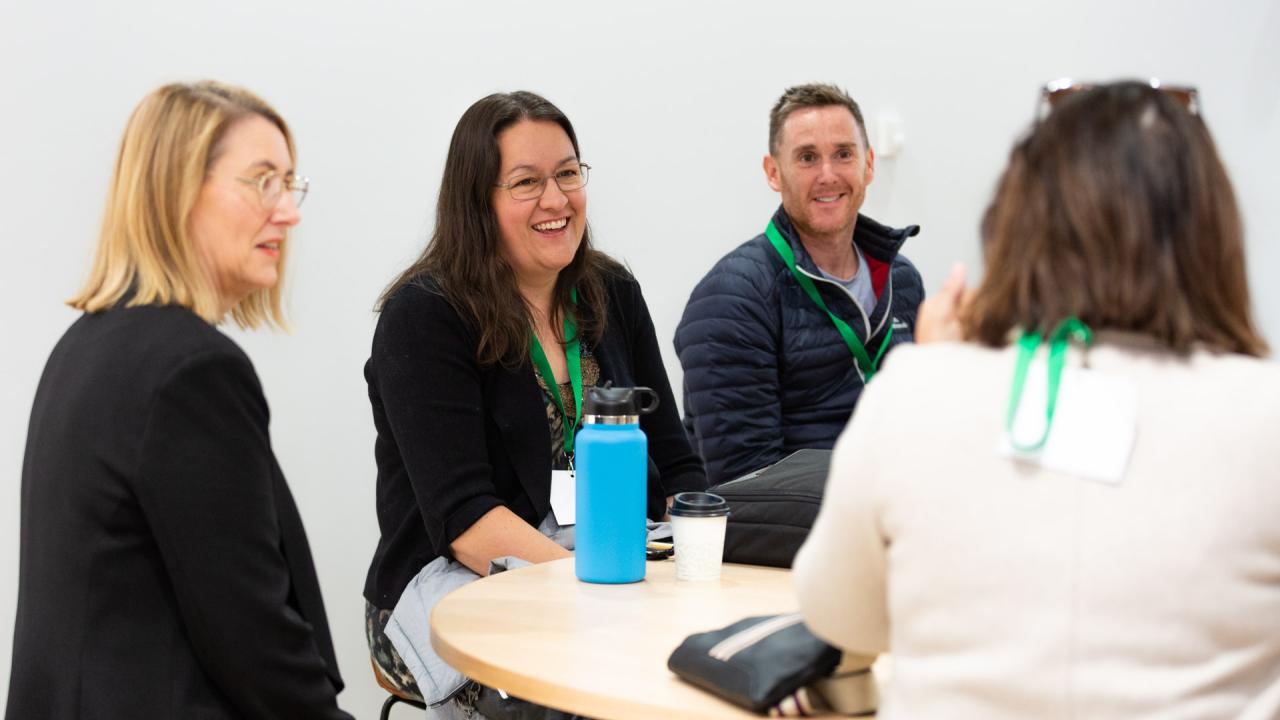14 Jun 2024
Teacher Feature - Strathcona Girls’ Grammar School: Design Thinking in the Arts

Getting kids started
I surveyed the sea of year 3 faces in front of me. Could we write a song together? With 26 7-year-olds? What could go wrong?
Every year, our Year 3 and 4 students embark on a theatre-making project over the course of term 4. They just love being in a show together - the costumes! The rehearsals! The chance to make believe and play! They also sing together as part of this performance, usually a song I’d source to fit the narrative of the show.

This year, however, things were going to be different. Instead of singing someone else’s song, we were going to take a step into the unknown and write our own song. I remember thinking, before introducing the project to my class, that I might be wildly overestimating our joint capabilities. I’d experimented with composing music with students before, and the outcomes, while often full of good ideas and learnings, were somehow not fully realised. We also had limited time to create, refine and practise our performance piece, and really, it would be so much easier to learn someone else’s song – wouldn’t it?
At this stage, I hadn’t worked with the Design Thinking process in detail; I knew roughly what it was but had thought it better suited to the working styles of other disciplines, like inquiry and STEM subjects. However, the structure of the Design Thinking model was appealing; maybe it would be worth a try? Even creative people (maybe especially creative people) might benefit from following its routine and guidelines?
Getting kids engaged
As soon as we began working, I realised that things felt different. My students, already invested in this real-life product development of their own song, were not only engaged, but actively taking command of the direction of our work. I had expected to be steering our project from the driver’s seat, but, from our first ‘empathise’-based initial activity through to the prototyping and testing phases, I was able to step back and take a facilitator role. It was that wonderful ‘buzz-concept’ student agency in full force and for real! Tina Grotzer, from Harvard’s Project Zero, says ‘agentive learners engage in progressive problem-solving, finding each new, more complex version of problems compelling... they experience flow and tend to lose track of time’. She says they are driven by the ‘epistemic emotions… the finding out emotions such as curiosity, interest, wonder, and awe... [and are more] motivated by actively figuring something out than by instruction'. I definitely observed this taking place. My learners filled our sessions with excited discussion and enthusiastic opinion-airing, of which I was often only peripherally part. They sought help when they felt they wanted it but were intent on working out the challenges for themselves.
The results
There were times, as I worked between sessions to collate my students’ ideas, when I was tempted to finesse their work, smoothing out phrases, substituting a slightly more refined lyric here or there. But I held back; my students were capably finding their way toward a unique and, in their words, totally professional outcome (they wanted it launched on Spotify for the world to enjoy!). It is important to understand that while teachers can step away from direct instruction when employing Design Thinking, it isn’t a free-for-all where students are turned loose with minimal input.
I organised each weekly session carefully so that time was efficiently spent, adjusting the plan according to what had been achieved in the previous lesson. Detailed planning was also important to ensure my differently-abled and additional-language students were accommodated, just as in any other class activity.
The other element with which I grappled was the Design Thinking focus on process as much as the end product. As a teacher, it was a little scary beginning work without a clear vision of the outcome. As a performing arts teacher, this was perhaps even more worrying, as my students’ work was going to be on very public display. Luckily for me my leap of faith paid off and I have also, alongside my students, learned a lot along the way.
Tips for teachers
For those Arts teachers (and of course any other) teachers out there who also feel ready to take the plunge and try the Design Thinking process themselves, here is my advice:
- the Design Thinking model works well! Keep referring back to the brief, follow the steps
- be ready to encourage your students to go back into the process – test and re-develop your prototype, then test again
- carefully plan your learning experiences, the same way you would for any other activity
- for Design Thinking learning to work at its best, push doubt aside and activate a disposition of curiosity; the process is rich but you need to be open to any eventuality.
The rest will follow and you will be happily surprised by the end result.
You may even learn something too!
About Anna Miller
Anna Miller is Director of Junior School Music at Strathcona Girls Grammar School in Canterbury, Melbourne. In addition to leading the Junior Music program, she also works with Strathcona’s Year 7 students in their SOUL program, an innovative Design Thinking-based program combining wellbeing and inquiry learning.
Reference
Tina A. Grotzer, 2021
https://projects.iq.harvard.edu/files/nextlevellab/files/engaged_to_agentive.pdf



